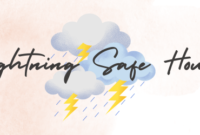Flood Safe Houses – Flooding is a natural disaster that affects millions of people around the world every year.
As urbanization increases and climate change brings more unpredictable weather, the risk of flooding in both urban and rural areas has become more pronounced.
Designing homes that are flood-resistant and making necessary preparations can significantly reduce damage and loss during floods.
This article will explore essential elements in designing flood-safe houses and discuss crucial preparations.
1. Site Selection and Elevation
Choosing the right location for building a house is the first line of defense against flooding. Avoiding flood-prone areas like low-lying lands, floodplains, or near rivers is essential. However, when building in such areas is unavoidable, elevating the house is crucial.
Elevation considerations:
- Raised foundations: Constructing the house on stilts or elevated platforms allows floodwaters to pass underneath without causing damage to the structure. The height of the elevation should exceed the historical flood levels in the area.
- Sloped terrain: Building on a natural or artificial slope can help direct floodwaters away from the home.
This approach reduces the likelihood of water entering the living space and can prevent significant structural damage.
Read also:
1. Best Safe Areas to Buy Property in the U.S. During Hurricane Season: A Comprehensive Guide
2. Building a Hurricane-Resistant Home: Key Features and Considerations
3. Fire-Resistant Home Design: Essential Ideas for Fire Safety
2. Flood-Resistant Materials
Flood-resistant materials are essential for both the structure and interior finishes. Traditional materials such as wood and gypsum drywall can absorb water, leading to swelling, mold growth, and eventual deterioration. Instead, consider the following:
- Concrete and steel: These materials resist water damage and maintain structural integrity when exposed to moisture.
- Flood-resistant insulation: Closed-cell foam insulation is water-resistant and does not absorb moisture like traditional fiberglass insulation.
- Tile or vinyl flooring: Instead of carpets or wooden floors, using tile or vinyl reduces the risk of damage and makes cleaning after a flood easier.
- Water-resistant finishes: Use paint, sealants, and other finishes specifically designed to resist water.
Incorporating these materials will make the house more durable and reduce costly repairs after a flood.
3. Drainage Systems
Effective drainage is key to preventing water from accumulating around or inside the house. Several systems can help manage water flow:
- Sump pumps: These pumps can be installed in basements or low-lying areas to actively remove water during a flood.
- French drains: Installed around the perimeter of the house, these are underground drainage systems that direct water away from the foundation.
- Gutter systems: Properly maintained gutters and downspouts divert rainwater from the roof to stormwater systems or appropriate drainage areas, reducing the risk of roof leaks and water pooling around the foundation.
An efficient drainage system is essential for minimizing floodwater damage and ensuring that water doesn’t accumulate in areas where it can cause harm.
4. Flood Barriers and Shields
Flood barriers can provide additional protection when floods are imminent. These include both permanent and temporary measures:
- Permanent flood walls: These are physical structures built around the perimeter of a home to keep floodwaters out. They can be constructed from concrete or brick.
- Temporary flood barriers: These can be sandbags, inflatable barriers, or other movable structures that are deployed when a flood is forecasted.
- Flood shields for doors and windows: Special shields can be installed to cover doors and windows, preventing water from entering through these openings.
Flood barriers serve as an extra layer of defense, particularly when heavy rains or river floods are predicted.
5. Flood-Proof Utility Systems
In flood-prone areas, raising or waterproofing utility systems is critical to minimize damage and maintain functionality during and after a flood. This includes:
- Elevated electrical systems: Elevate outlets, switches, and appliances above the potential flood level. Consider installing electrical panels in upper floors.
- Waterproof HVAC systems: Placing heating, ventilation, and air conditioning systems above flood level or using waterproof covers can prevent damage.
- Backflow prevention valves: These valves are installed in plumbing systems to prevent sewage from backing up into the house when floodwaters overwhelm the municipal drainage systems.
Raising and waterproofing these systems protects the house from long-term damage and avoids potential health hazards from contaminated water.
6. Emergency Preparations
Besides designing the home itself, proper preparation is crucial for safety during a flood event. Homeowners should be aware of these important steps:
- Create an emergency plan: Ensure that all family members know the evacuation routes, meet-up locations, and emergency contacts.
- Keep emergency supplies: Stock up on essentials such as bottled water, non-perishable food, first-aid kits, flashlights, and batteries.
- Secure important documents: Store vital documents in waterproof containers or save digital copies in cloud storage.
- Insurance: Ensure that your home insurance policy covers flooding, as standard policies often do not include this protection. Flood insurance can provide critical financial relief in the aftermath of a flood.
Being prepared not only helps keep residents safe but also reduces potential losses during a flood – Flood Safe Houses.
7. Green Infrastructure and Landscaping
Sustainable landscaping can mitigate flood risks by absorbing excess rainwater and improving drainage. Incorporating green infrastructure, such as:
- Permeable pavements: These allow water to soak into the ground instead of running off into storm drains.
- Rain gardens: Planting areas that are designed to capture and absorb rainwater helps reduce runoff and manage stormwater.
- Planting native vegetation: Native plants typically have deeper root systems that absorb more water and reduce soil erosion.
These landscaping techniques not only reduce flood risks but also contribute to the local ecosystem’s health.
Conclusion
Designing a flood safe house involves more than just elevating the structure; it requires thoughtful planning, material selection, and the inclusion of systems that can mitigate the impact of floodwaters.
Additionally, making necessary preparations and emergency plans ensures that residents can respond quickly and efficiently in the event of a flood.
By incorporating flood-resistant design and preparation strategies, homeowners can protect their homes, possessions, and most importantly, their lives.






